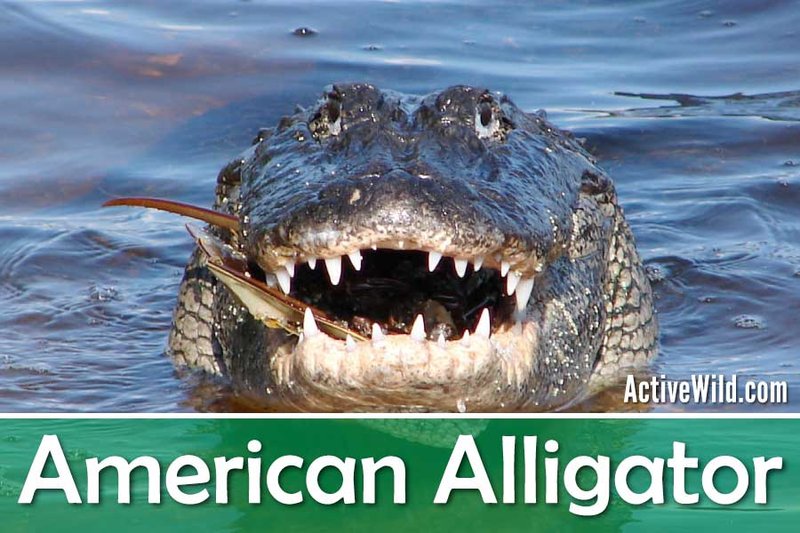
Imagine sitting at a café, sipping your favorite drink, and diving into a conversation about alligators. You might hear some wild claims—like alligators can run fast or they’re ruthless hunters of anything that moves. But what’s true? Let me demystify the American alligator for you, separating fact from fiction in a friendly, straightforward way.
The Alligator’s Habitat: Where Do They Live?
You might picture alligators lounging in a swamp, and that’s partially true! The American alligator primarily calls the wetlands of the southeastern United States home, including Florida, Louisiana, and Georgia. But here’s the catch—these creatures aren’t limited to just swampy areas. They also thrive in rivers, lakes, and even brackish waters where salt and fresh meet.
The alligator’s adaptability allows it to survive in various environments. In fact, they can often be seen basking on riverbanks, soaking up the sun. If you’re ever in their territory, keep an eye out for those sunning giants! Just remember, even if they look relaxed, they’re always alert.
Myth
Let’s tackle a big one: the idea that alligators are simply vicious hunters waiting to attack. Honestly, this myth can scare people away from enjoying beautiful marshlands or lakeside picnics. Here’s the thing: while alligators are undoubtedly powerful predators, they generally avoid humans.
In fact, alligators are more afraid of us than we are of them. Most attacks happen when an alligator feels threatened, or, unfortunately, when people attempt to feed them. Feeding alligators can lead to dangerous situations as they start to associate humans with food. If you see an alligator, it’s best to admire it from a safe distance.
Myth
You might be surprised to learn that many folks believe alligators can sprint as fast as a cheetah! While they have strong legs and can move quickly in short bursts—especially on land—their speed is often exaggerated. Alligators can reach speeds of about 11 miles per hour on land, which is quick but far from the record-breaking speeds of land mammals.
In water, they’re agile and can swim at about 20 miles per hour over short distances. So, if you’re ever in a swamp and hear a splash, don’t panic; it’s probably just an alligator retreating into the water to stay safe.
The Alligator’s Diet: What Do They Eat?
Alligators are opportunistic feeders, meaning they’re not picky eaters. Their diet mainly consists of fish, birds, small mammals, and sometimes even the occasional deer. But here’s a fun fact: alligators can only eat what they can catch. They have powerful jaws, but smaller prey often gets away!
You might be wondering if they eat humans. It’s rare, but not impossible. Most of the time, alligators prefer easy targets. If you’re hiking or enjoying nature, think about the natural ecosystem. Birds and fish are more likely on their menu than unsuspecting humans. So, if you’re outdoors, just be smart and respectful of their space.
Alligator Lifespan and Growth
Did you know that alligators can live for 50 years or more in the wild? That’s impressive! When they’re born, they are about the length of a pencil (around 8 to 10 inches). Over the years, they grow, sometimes adding several feet in just a few years.
Typically, male alligators can reach lengths of 11 to 15 feet, while females usually are smaller, about 8 to 10 feet. Growth primarily depends on environmental factors, like availability of food and climate. But once they reach adulthood, their growth slows down significantly.
Myth
Another common misconception is that you can keep an alligator as a pet. Let me explain why this is a bad idea. First off, alligators can grow quite large, making them not-so-friendly housemates. They require specific care, including large enclosures and a carefully controlled diet, which isn’t manageable for most people.
Furthermore, owning an alligator is illegal in many places without a special permit. It’s not just about having a cool pet—it’s about the responsibility that comes with it. Alligators are wild animals, and they’re best appreciated from a distance or in a sanctuary.
Conservation Status: What You Should Know
Finally, let’s talk about conservation. The American alligator was once endangered due to hunting and habitat loss, but thanks to conservation efforts, they’ve bounced back significantly. These creatures are now considered a success story.
While they’re no longer endangered, they still face threats from habitat destruction and pollution. It’s crucial to support efforts aimed at protecting their environment. When you consider the role alligators play in their ecosystem, keeping them safe is not just beneficial for them but for the entire habitat.
So, there you have it: a closer look at the American alligator, shattering some myths and highlighting important facts. These magnificent reptiles are essential to their ecosystems and deserve our respect and protection.
When you think about alligators, remember they’re not just fearsome creatures; they’re part of a complex web of life in our wetlands. Whether you’re spotting one in the wild or learning about them through documentaries, keep that curiosity alive. After all, understanding these incredible animals makes us better stewards of nature.

